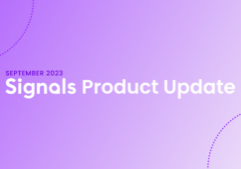The sales process is often more of a marathon than a sprint, and it can feel discouraging at times. For example, B2B services have, on average, a 3.5% lead conversion rate. One of the strategies that can strengthen your business’s sales is a pipeline. Let’s explore how to create a sales pipeline that is useful, practical, and effective.
What Is a Sales Pipeline?
A sales pipeline is a visual representation of every stage of the sales process. The pipeline identifies all of the steps that a sales representative takes to close a deal.
It’s important to note that a sales pipeline is not the same thing as a sales funnel. A pipeline explains how a sales team will go about locating and converting leads. A sales funnel, on the other hand, represents the stages that prospective clients go through before deciding whether to become customers.
Although you should tailor a sales pipeline to the specific structure of your business, there are some basic points to cover. These are some of the most critical steps that you can use to build a pipeline and increase sales.
Establish the Stages & Milestones
Think realistically about your sales process as you build your pipeline. Include the stages that accurately represent what your team does from beginning to end, such as:
- Prospecting and generating leads
- Qualifying leads
- Initiating contact
- Presenting a sales proposal and negotiating
- Closing the deal
- Beginning the onboarding process
Along with these stages, establish milestones that will indicate whether a sales representative has been successful for each one. For example, a milestone for initiating contact might be successfully setting up a meeting or demo.
Place Leads In the Pipeline
If you already have prospective customers going through the sales process, you can add them to the various stages of your pipeline. For example, if a sales rep has sent a potential customer a cold email and is awaiting a response, that lead would fall under the category of initiating contact.
Analyze the Data
Data is key to a successful sales pipeline. It allows for lead segmentation, which involves grouping leads by demographics, behaviors, and other factors. This enables you to customize your proposal for each lead.
It’s also important to determine how many leads you need to generate in order to convert enough customers. Use the average number of conversions for your business to establish how many leads you will need to have at the early stages of your pipeline. This can also help you set goals for team members and the number of deals that they should be working on at any given time.
Evaluate Your Sales Process
Examine your sales cycle to determine how long it should take to close an average deal. Consider whether there are any ways to streamline your process or improve your sales strategies.
Manage Your Pipeline
Once your business has an established pipeline, it’s important to maintain it and use it to its full potential. This might involve:
- Updating deals and removing ones that have become stagnant
- Monitoring to see when to increase lead generation
- Looking for bottlenecks
It’s also essential to use pipeline metrics to determine whether your sales team is on track and ensure that leads don’t get lost along the way. According to a 2020 study, 54% of marketing and sales professionals said that they had missed opportunities for revenue. This is often due to a lack of follow-up, a problem that can be remedied with an effective sales pipeline.
Build A Better Pipeline
As you consider how to build a sales pipeline, keep in mind the importance of using the right tools. We can automate your pipeline building with its account-based engagement software and nurture leads more effectively and efficiently. Book a demo to learn more.
READ MORE
Start seeing your Buyers' signals
Signals is helping companies automate, grow, and close sales pipeline with industry-leading predictive intent scoring, lead generation, and real-time engagement.






















